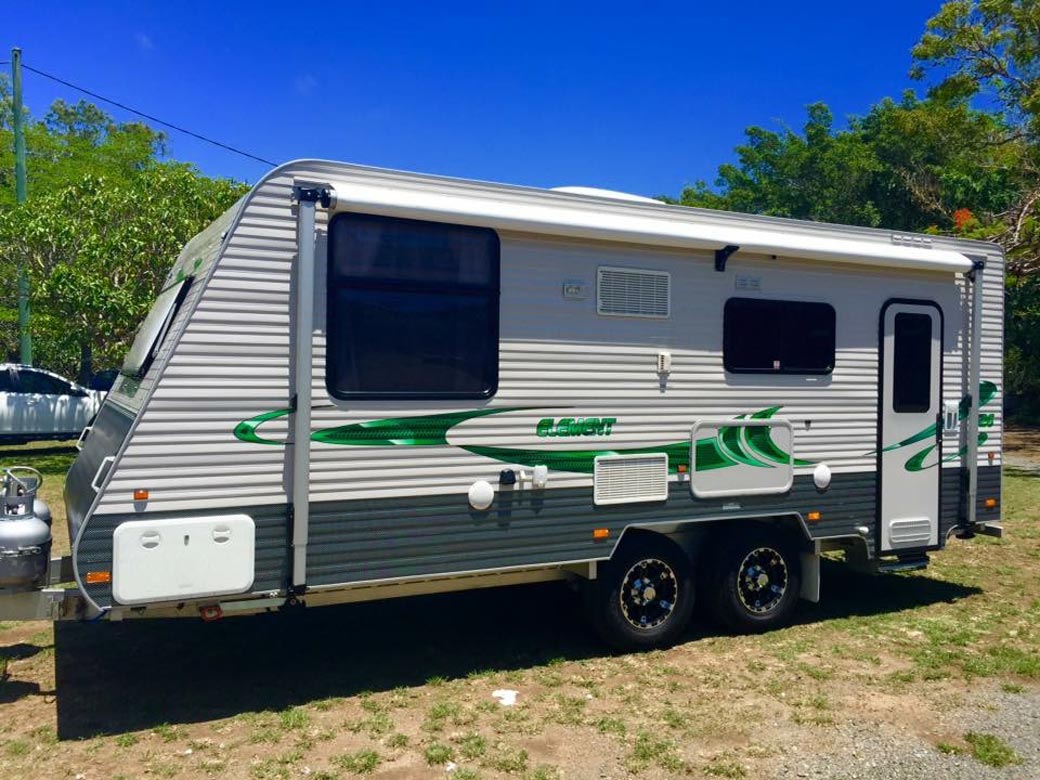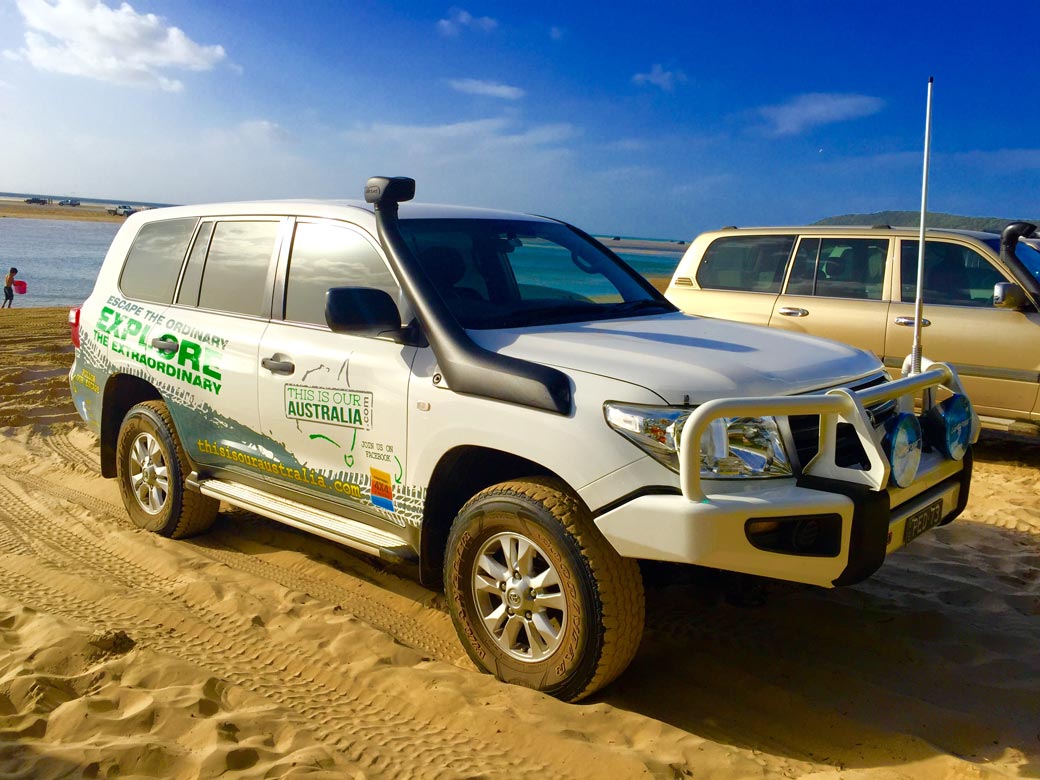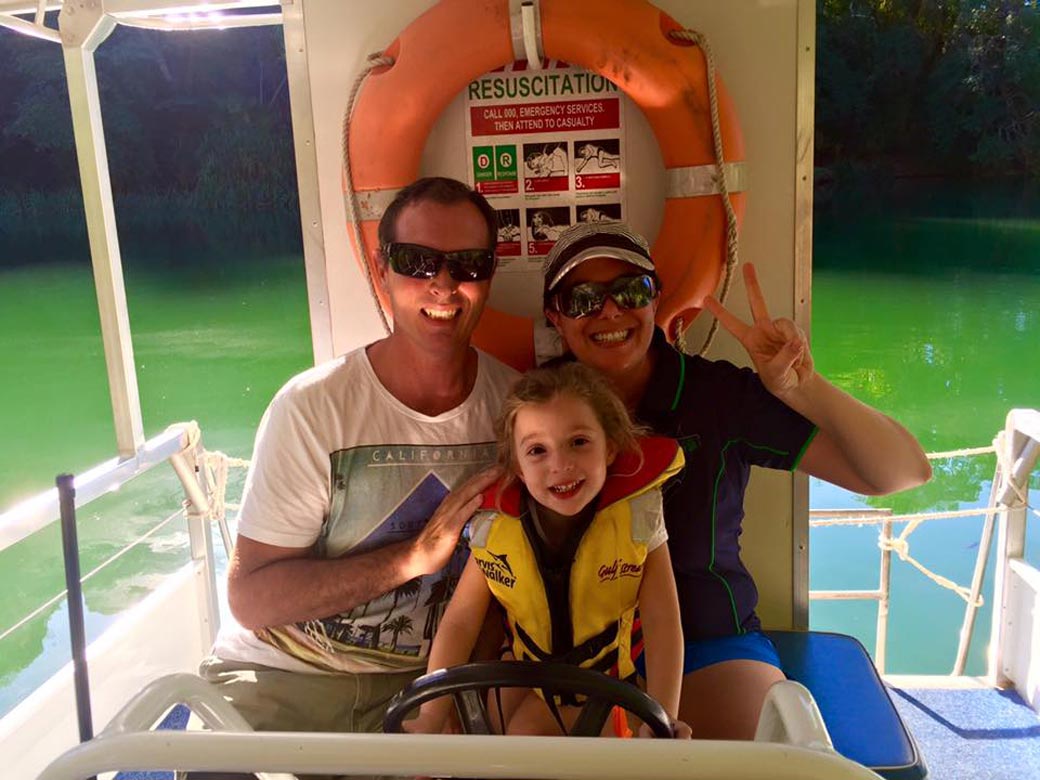How to Live on the Road
 4WD Adventure Pack
4WD Adventure PackThis Is Our Australia is a family of three who put their suburban life on hold to pursue their dreams of travelling Australia. We asked Mel, Pedr and little Chloe to tell us what long-term travellers should consider before heading off on the adventure of a lifetime.
Accommodation
The first thing we had to consider on our 3-year adventure was what we were going to travel in, whether that be a caravan, motorhome, tent, camper trailer or slide-on camper. A tent or camper trailer were out of the question for for our full-time needs, and we enjoy 4WDing, so a caravan and 4x4 was going to suit us best.
Our must-have list included a full-size caravan so that we could minimize our set-up time and retain a good amount of living space. Being tall people, we wanted a queen size island bed (so that one person doesn't have to climb over the other to go to the toilet), a bunk bed setup for Chloe (they usually come in double or triple), kitchen, seating area and a shower and toilet (to aid toilet training and mid-night visits).
 We opted for a combined shower and toilet, which keeps our van’s length down and weight down, and we installed a shower curtain to keep the toilet dry while showing. After using our current setup for a few months, we decided that if we ever upgraded our van, we will buy a separate shower and toilet and use the extra space for a small washing machine.
We opted for a combined shower and toilet, which keeps our van’s length down and weight down, and we installed a shower curtain to keep the toilet dry while showing. After using our current setup for a few months, we decided that if we ever upgraded our van, we will buy a separate shower and toilet and use the extra space for a small washing machine.
For mobile entertainment we have a TV with an inbuilt DVD player (a must with kids) and TV antenna installed on the roof. The TV can run on 240-volt and 12-volt, as can the fans we had installed. The kitchen was an area we wanted to be fully functional, so ours is complete with a fridge, freezer, microwave, stove and oven. This makes storage and food preparation so easy, and to top it off we have an extra fridge and freezer in the car (along with a portable BBQ).
When choosing our van, we had to consider our own travel needs very carefully. We are not always off-road, but to keep our options open when it came to unsealed roads, we ensured the caravan we chose could handle dirt roads and minor corrugations. This allows us to stay in more remote areas for extended periods, and then extend into more challenging off-road areas either on day trips or with our tent in the back.
A good tip for prospective caravan buyers is to evaluate the weight and payload of the van you’re looking at, as it really doesn’t take much to go over the limit in many vans. The implications of an overweight rig can be disastrous, and considering it’s going to be your home while you travel large distances in sparsely populated areas, it’s better to be safe than sorry.
The Tow Vehicle
We had to do a mountain of research to ensure we had the correct tow vehicle for the job. Finding an able vehicle that was legal for insurance purposes was an important step, as the wrong vehicle can void your insurance. We wanted a 4x4 that was easy to get parts for and preferred a wagon over a dual cab, as they generally have a softer ride and a larger tow capacity. These factors, along with the need for some comfort in the back for Chloe, we landed on a LandCruiser 200 GX, which has a 3.5 tonne tow capacity and 350kg on the ball.
 We wanted a vinyl floor to make cleaning easy and therefore a GX suited our requirements. We also installed a rear draw system to carry Pedr’s tools, a UHF radio for communication with trucks, a bull bar for protection from animal strikes, a dual battery system to run our fridge, extendable mirrors (which are a must-have for towing), all-terrain tyres of light truck construction, an electric brake controller and a Hema Navigator HN7, as good mapping for off-road and outback areas makes finding places to explore so much easier.
We wanted a vinyl floor to make cleaning easy and therefore a GX suited our requirements. We also installed a rear draw system to carry Pedr’s tools, a UHF radio for communication with trucks, a bull bar for protection from animal strikes, a dual battery system to run our fridge, extendable mirrors (which are a must-have for towing), all-terrain tyres of light truck construction, an electric brake controller and a Hema Navigator HN7, as good mapping for off-road and outback areas makes finding places to explore so much easier.
Sustainability
For travelers, sustainability refers to power and water sources for when you are in remote areas and free camping. To ensure we have power while stationary, we had a solar panel fitted to our van and purchased a portable solar panel to keep the car fridge charged. For easily charging our mobile devices, we had USB ports put in the van and car, and for additional water we purchased a 100-litre water bladder, which can sit in the rear of our car to enable top-ups of water to the van when we are out for the day.
The other kind of sustainable travelers need to consider is financial sustainability, which is probably the biggest "mind block" that most people have when it comes to throwing off the bow lines and setting sail on an adventure. We often feel overwhelmed with everyday living expenses, let alone putting travel on top of that. There is no perfect answer that suits everyone, for some people their desire to travel may be just for weekends, others for a few months, years, or indefinitely. We are absolutely loving our full time travel lifestyle and can't imagine going back to the one spot in any hurry.
 We have found that you don't need as much money to live on the road because you don't buy as much "stuff". The reason we often buy things is because we need new stimulation, however when you are traveling you have a constant source of new stimulus ever
We have found that you don't need as much money to live on the road because you don't buy as much "stuff". The reason we often buy things is because we need new stimulation, however when you are traveling you have a constant source of new stimulus ever






0 comments